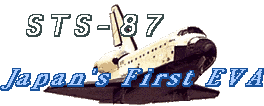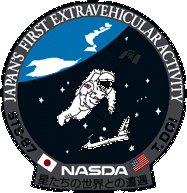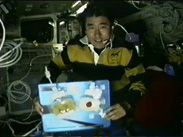|
|||||
 |
 |
| Astronaut Takao Doi performed Japan's first spacewalk. |
| Mission Specialist (MS) Takao Doi's
main activities |
| Extravehicular Activity (EVA) |
|
 |
|
 |
| Activities inside the cabin |
| Shuttle Entry Operations support |
| Status reports |
 | |
 | |
 | |
 |
| VIP call |
| Public relations activities |
|
 |
|
 |
|
 |
|
|
|
 |
|
 |
|
| STS-87 Mission Overview |
| Main mission |
Last Updated : February 18, 1997
| Index |
|

|